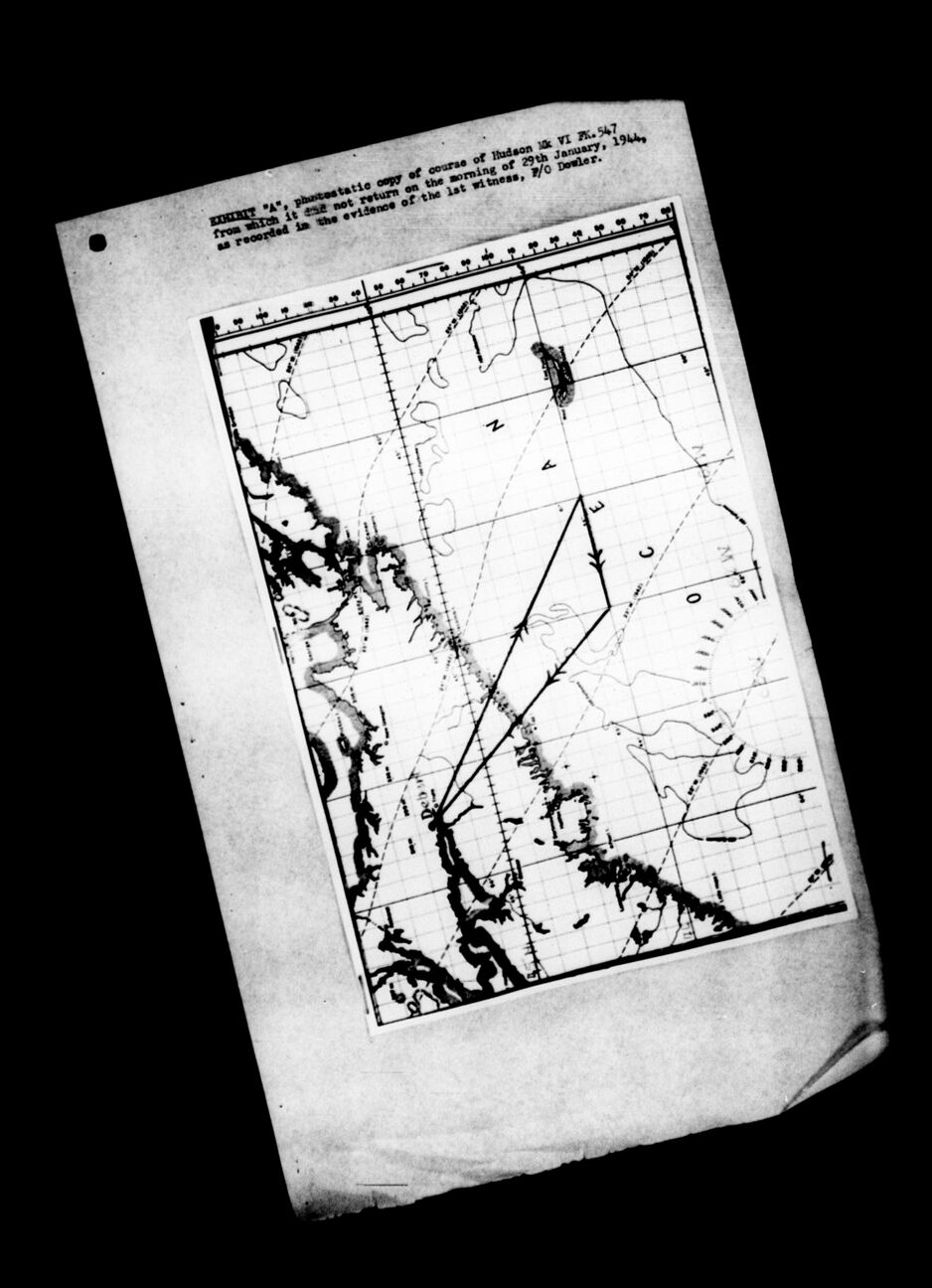
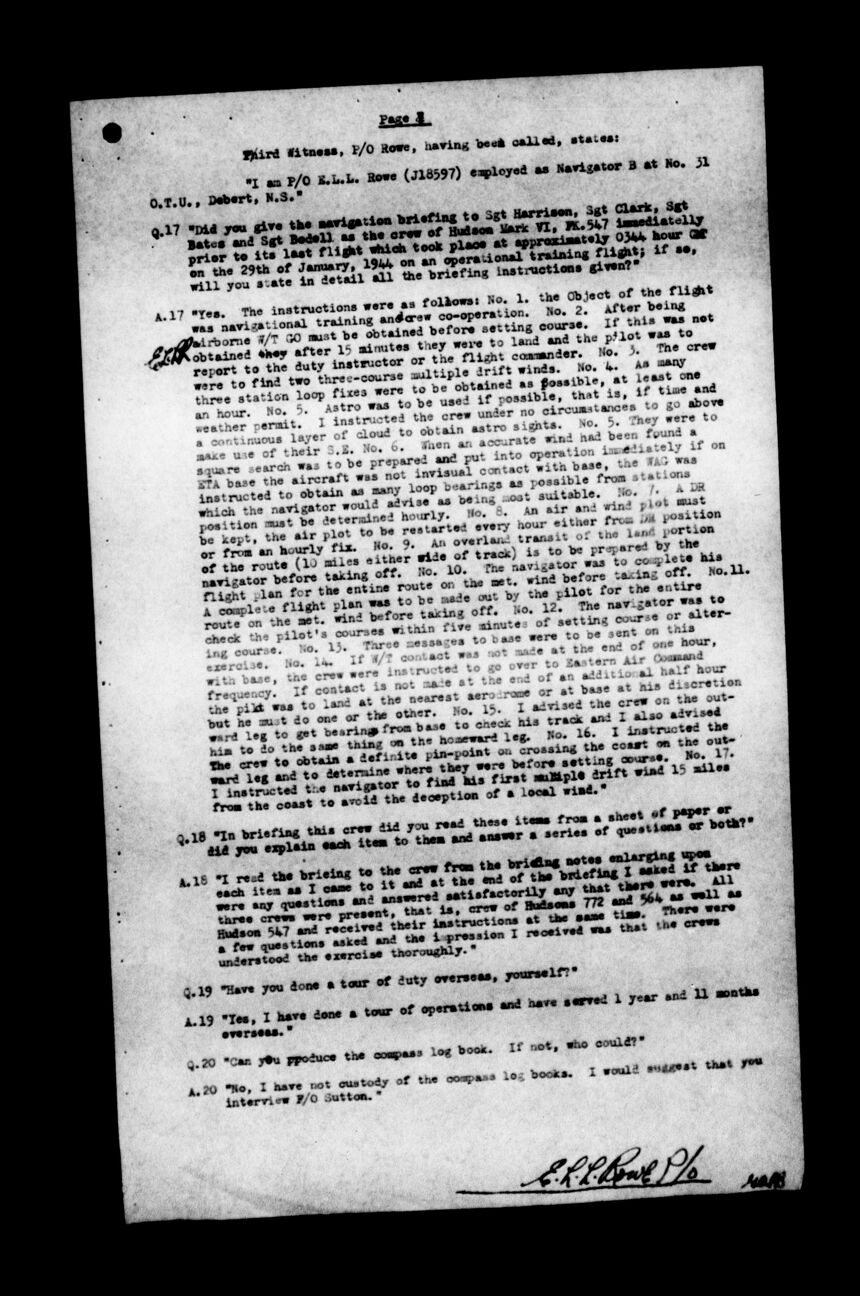
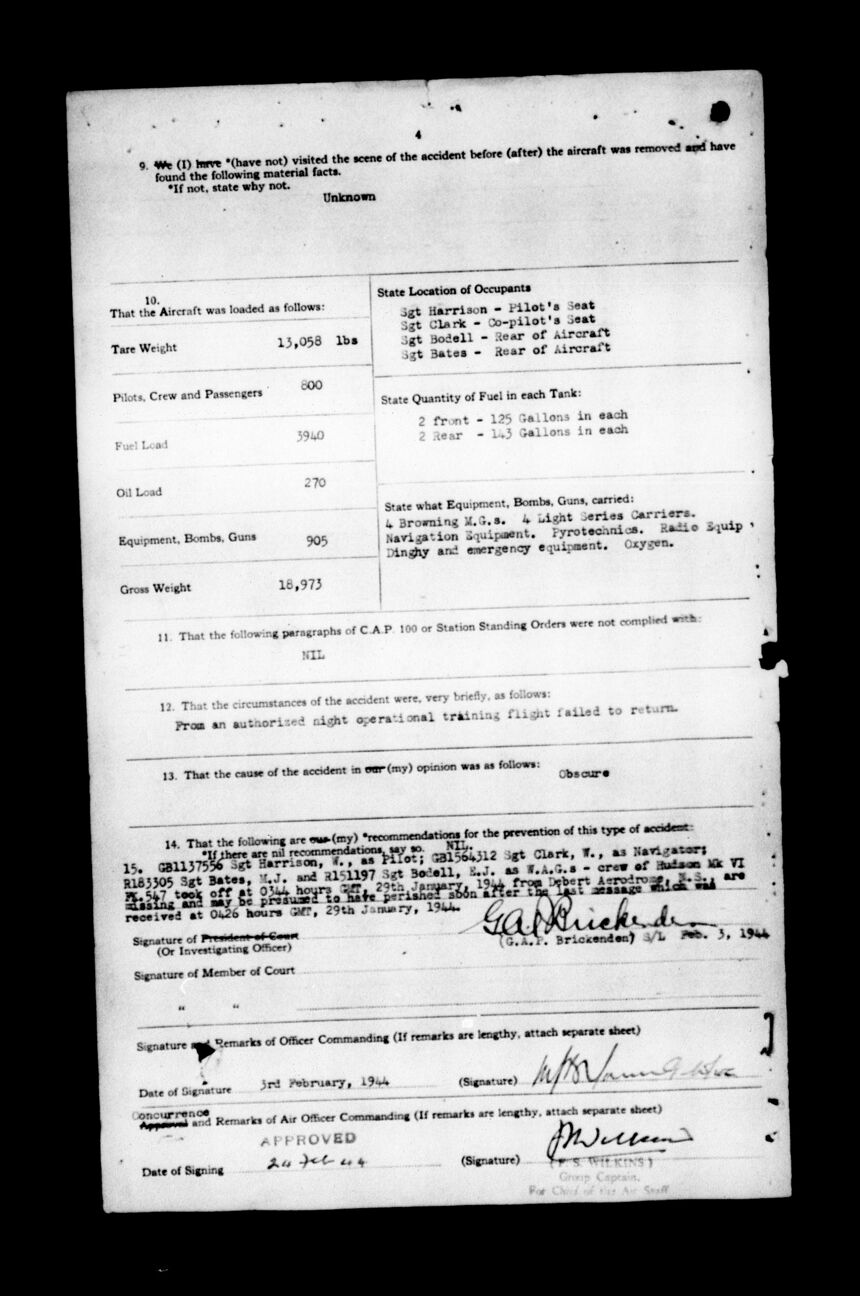
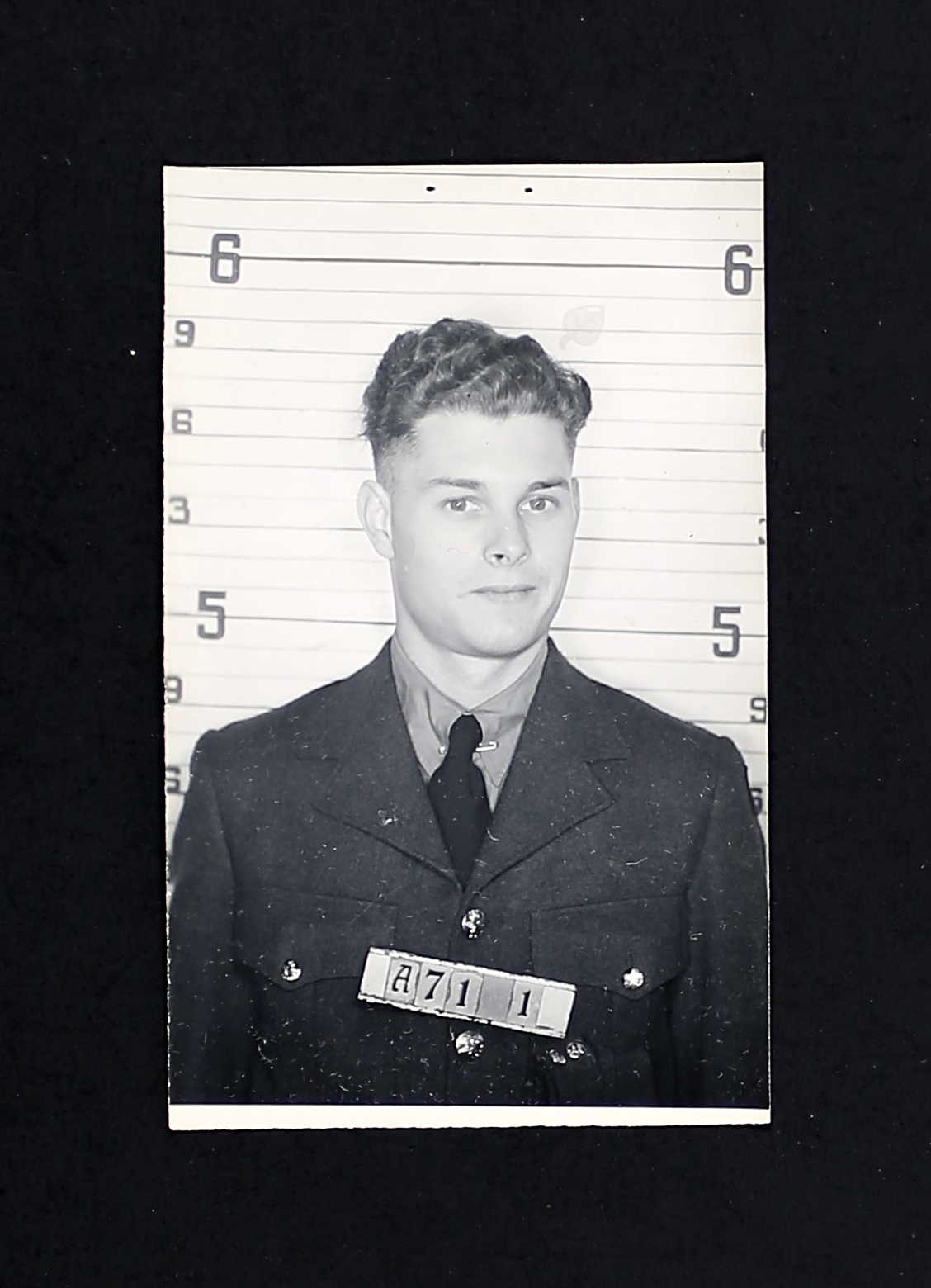
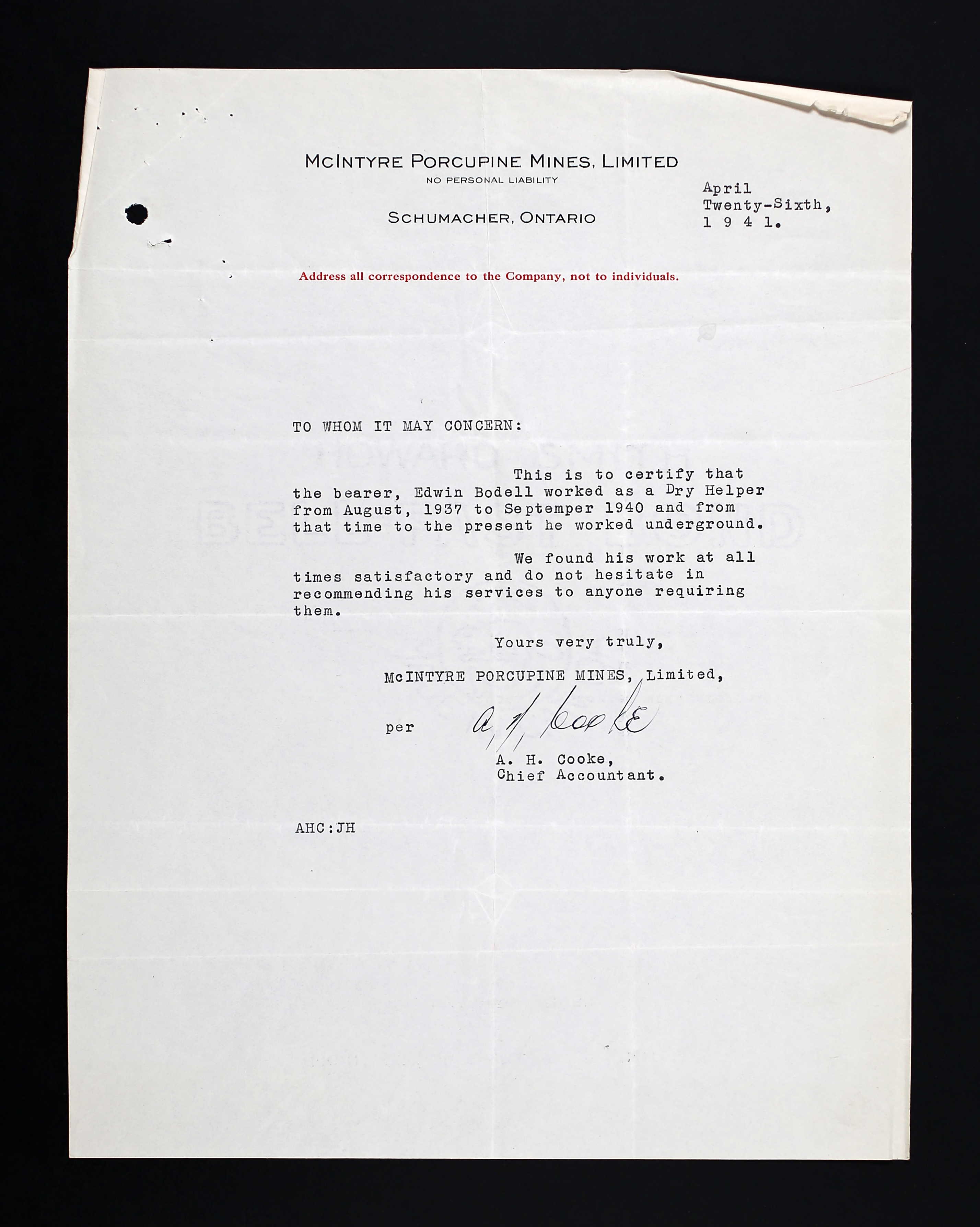
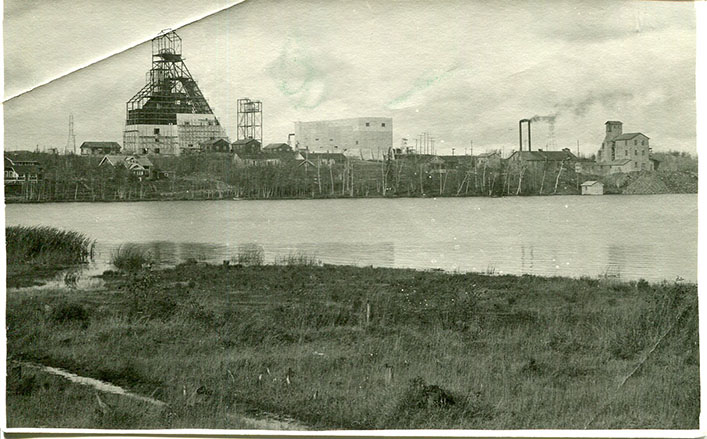
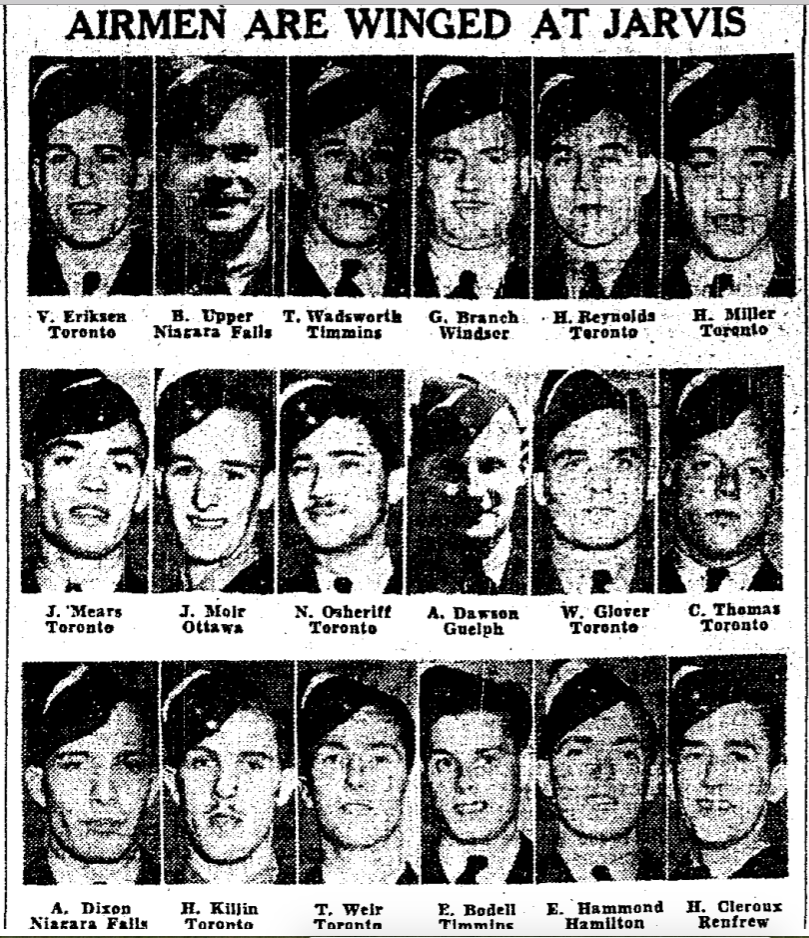
July 24, 1920 - January 29, 1944







Edwin had applied to the RCAF in July 1941 at the Galt Air School but was not notified of acceptance. Edwin worked as a dry helper/miner/cage tender at McIntyre Mines from 1937 to 1941, then “went south to work” at a steel company in Hamilton, Ontario from June to December 1941, but was homesick and returned to Timmins.
He was accepted into the RCAF in April 1942 in North Bay, Ontario. Margaret Mary Cunningham and Edwin married in Timmins January 31, 1942. (By May 1942, Margaret moved to Hamilton, Ontario. Their son Lawrence was born May 11, 1943.)
Edwin has $5.00 in War Savings Certificates and $50 in a Victory Loan Bond, registered in Margaret’s name.
His hobbies included drafting, illustrating, and playing rugby on school teams. During his medical examination, he stood 5’7” tall and weighed 131 pounds. Possible diabetes was noted, but “sugar tolerance just well within normal limits.”
Edwin began his journey through the BCATP at No. 1 Manning Depot, Toronto, Ontario, May 18 until July 20, 1942. He then was sent to No. 14 SFTS, Aylmer for five weeks before being sent to No. 4 Wireless School in Guelph, Ontario on August 29, 1942. He earned a 78% and was 32nd out of 80 in the class.
He was then sent to No. 1 B&G School, Jarvis, Ontario, March 20 to May 9, 1943. “Average student. Not overly energetic.” He was 18th out of 19 in the class in Gunnery. “Very careless in his personal appearance. Might have done much better on the course with a little effort.” Final assessment: 14th out of 19 in class with a 66.1%.
From there, he was sent to NO 4 AOS, London, May 10 until November 12, 1943. He was in the station hospital July 3 to 8, 1943.
Edwin was a WAG.
On his General Conduct Sheet: January 30, 1943: Absenting himself without leave, 30 hours, 45 minutes, confined seven days to barracks and forfeited two days’ pay. February 3, 1943: Smoking in a prohibited area, three days confined to barracks. February 28, 1943: Failing to return to the station on the 0015 hrs bus, confined three days to barracks. December 29, 1943: Absent without leave, absent seven days, four hours, and 30 minutes. Severe reprimand, January 5, 1944. He forfeited eight days’ pay.
By November 13, 1943, he was with Eastern Air Command, Halifax, Nova Scotia assigned to No. 31 O.T.U.
On January 29, 1944, he was aboard Hudson FK547 along with fellow WAG Michael Joseph Bates, RCAF, the pilot Sgt. William Harrison, of Kirklivington, Yorkshire, England and the navigator Sgt. William Clark, from Duchal, Renfrewshire, Scotland. They did not return from a routine night navigational flight.
January 29, 1944: “The aircraft had taken off shortly after midnight Friday for night training flight towards Sable Island and not hear of since.”
Eighteen witnesses were called during the Court of Inquiry held between January 31 and February 3, 1944 at No. 31 O.T.U., Debert, Nova Scotia; a photostatic copy of the chart showing the course of the aircraft and of the search plan were included as well as a list of equipment aboard Hudson FK547.
The first witness, F/O D. R. Dowler, C20513, Flying Control Officer stated that Hudson FK547 “took off at approximately 0344 hours GMT on January 29, 1944 on operational training flight, route 3, a triangular 2 ½ hour trip. The ETA of the aircraft was 0622 hours, last message from the aircraft was received at 0426 hours. At 0620, operations room informed me that aircraft F K547 was evidently overdue.” Attempts were made to contact the aircraft and then arrangements were made for search aircraft to be airborne at first light. he could not see the occupants but consider that a cough normal in all respects. The aircraft had asked permission to take off and permission was given from the tower on the radio transmitter, but his radio reception was poor that night this permission was supplied by a green on the traffic gun [signal lamp]. Dowler stated that the weather was good with scattered snow showers over the route.
The second witness, F/L C. C. Underhill, J5112, Squadron Commander flight tested the aircraft and felt it was one of the best on the station “as it was a new Mark VI.” He cautioned the pilot, Sgt. William Harrison, “I advised the captain to exercise his own discretion if he found that the weather should be worse than we expected and if he did not like the weather he could turn back.” Underhill felt that the ability of the pilot was average. he explained what was done by the way of search for the missing aircraft including extra aerodrome facilities of lighting and a Searchlight. He notified the training wing and he asked him to carry on with the organization of the search. Staff pilots and navigators were called in to fly. “A thorough search was laid on in the area which the machine was operating. At first light three aircraft took cough and preceded to the area of the course. Immediately after three aircraft from #2 squadron took off for a search of the area also. Aircraft from other stations participated as well. there were 19 aircraft in all. The search was carried on throughout the whole of the first day. The area was covered very thoroughly as shown by the fact that a small wooden raft in the area was located and reported by different crews. Bad weather prevented the search from being carried on during the second day. On the third day our aircraft operated in the area again and during all this time one of our aircraft was standing by fully equipped with the Lindholme rescue equipment aboard ready to go at a moment's notice.” SEE LINK BELOW FOR FILM.
The equipment aboard the Hudson included a dinghy, dinghy radio, rations, first aid kit, signal cartridges, etc. Underhill regretted to say that he did not think there was any possibility of finding the crew. He was asked to explain why in the last 17 months, four aircraft have disappeared during that period on similar exercises under similar conditions. He replied, “It remains a complete mystery to me. None of the previous crews or aircraft have ever been heard from again although I have only been with this Squadron since last September, that this is the information I have been given.” He said that the other two crews who did the same exercise had no difficulties and returned safely.
The third witness, P/O E. L. L. Rowe, J18597, Navigator, who had completed a tour of almost two years overseas, told the court that he gave the navigational briefing to the crew. (See document above.). The crew seemed to understand as they asked no questions.
The fourth witness, S/L Headly, J83662, Medical Officer stated, “There is no evidence that any of the occupants of the aircraft…being in such a state of health as to have contributed to the accident.”
The eighth witness, P/O M. M. Botham, J28998, student pilot flew with Sgt Harrison. “He was a very dependable, efficient pilot and clean living as he neither drank nor smoked and was very popular on the staff. The navigator, Sergeant Clark, in ground school was highly regarded as having very good knowledge of navigation and all-round flying work. I did not know either Sergeant Bates or Sergeant Bodell.”
The 12th witness, P/O J. W. Marr, J28029, student pilot stated that the weather was rough over the water, “but I was using ‘George.’ It was a very dark night and after leaving the coast, it was entirely an instrument flight…there was no rime icing and as soon as I ran into snow flurries, I put on carburetor heat. I have flown with Sergeant Harrison at night and I considered him a very steady pilot.”
Memorandum dated February 16, 1944: “I think much was expected of this pilot considering his experience. He had only made one previous night flight of three hours duration, all other night flying having being circuits and bumps. He had not flown at night at all for 20 days and then was sent off in very indifferent weather conditions. I attached the file of a very similar accident which occured in April last in which you will see the action taken by AMT and yourself.” G/C F. S. Wilkins.
LINKS:
Margaret remarried by June 1950 and was living in Toronto. She was Mrs. Dermody. On Find a Grave, Corporal L. E. Bodell, C. D. is buried in Whitby, Ontario. He died on September 14, 1978, age 35. He could be Edwin’s son.